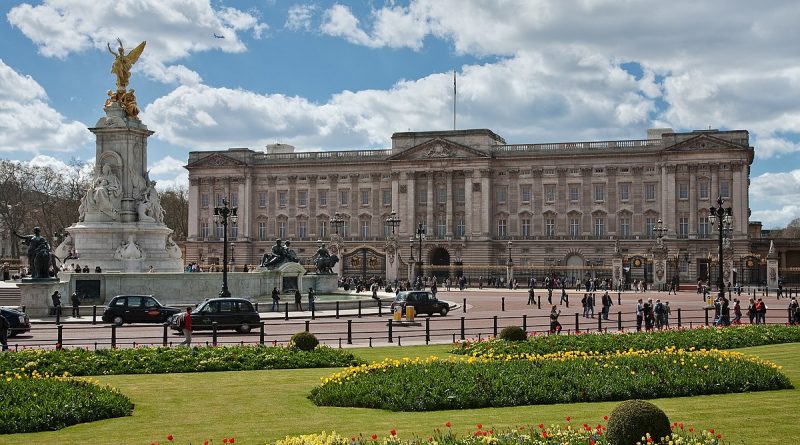Buckingham Palace
Buckingham Palace is the official residence of the British monarchs and the largest royal palace in the world. Buckingham Palace is the place where orders and decorations are presented and official functions are held. However, Queen Elizabeth II, the current ruler, does not always attend the ceremonies, a task usually performed by Crown Prince Charles.
The building is staggeringly large and a symbol of the grandeur and immutability of royalty in England.
When the royal flag is flown over the palace, it signifies that the Queen is in residence. When the Queen is absent, the national flag of the United Kingdom (known to us as the Union Jack) flies from the flagpole.
Tourists can usually only visit Buckingham Palace in August and September, when the Queen is on holiday at her country residence.
History of Buckingham Palace
In the 10th century, King William the Conqueror of England gave the land on which Buckingham Palace now stands to the monks of Westminster Abbey.
In the Middle Ages, King Henry VIII, famously greedy, bought the area for the royal family, and some 100 years later it passed to the Sheffield family.
John Sheffield, politician and poet, the first Duke of Buckingham, built a grand country house, Buckingham House, in 1703.
However, King Henry III felt that his former residence in St James’s Park had become too small, so in 1751 he bought Buckingham House, along with its grounds, for himself and his wife Charlotte. From then on, his estate was called Queen Charlotte’s House.
Over the next 75 years, architects John Nash and Edward Blore built three other buildings similar to Buckingham House. Together they formed a square with a huge courtyard in the centre.
Buckingham Palace became the principal royal residence in London with the accession of Queen Victoria in 1837. During her reign a further annexe was added, and the entrance to Marble Arch was moved to its present location in Hyde Park, near the famous Oratory Corner.
Description
The halls were originally decorated in the Georgian style, using faux marble and blue and pink lapis lazuli for decoration.
In the early 20th century, Victoria’s eldest son, King Edward VII, introduced major changes. The main part of the rooms were in the French Belle Époque style – in shades of gold and cream – and the smaller reception rooms were in the Chinese style, with furniture from the Royal Palace at Brighton and also from Carleton House.
Buckingham Palace now covers an area of 20 hectares, including 17 hectares of gardens. In total, the building, which can accommodate up to 30,000 guests, has 775 rooms, including:
- 19 are state rooms
- 52 are royal and VIP rooms
- 72 – bathrooms
- 188 – staff quarters
- 92 are office spaces
The building is staffed by some 800 employees whose job is to look after guests and residents, maintain perfect order and prepare the rooms for award ceremonies and banquets for rulers and ambassadors.
Buckingham Palace was built with the most expensive materials, so the cost of construction was enormous. Despite being the largest building in the world, there is no consensus on its beauty and, as some commentators say, it is ‘one of the ugliest buildings in the world’.
Its largest hall is the Ballroom, built in 1853 and first used as a guest hall in 1856 to mark the end of the Crimean War.
Buckingham Palace Address
Buckingham Palace London SW1A 1 AA.
You may alo like:

